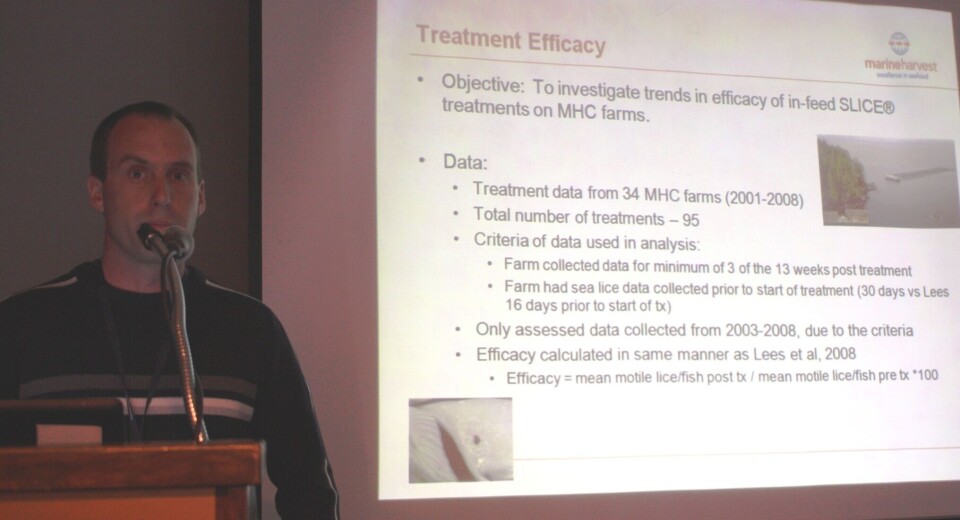
Marine Harvest opens books on sea lice
At last week's annual conference of the Aquaculture Association of Canada in Nanaimo, B.C., an employee of Marine Harvest Canada described some of the facts associated with the company's strategy regarding the management of sea lice on their farmed Atlantic salmon.
Most of the data presented at the conference are readily available on the Marine Harvest web site, as the company has decided to post site-specific information for all to see. Accurate data cover the period 2003-2008, after the Provincial government made sea lice monitoring and management compulsory.
The company operates some 30 active farms at any given time in British Columbia, while other farm sites are in a state of fallow. Marine Harvest production is about 40,000 metric tonnes of Atlantic salmon per year in the region. The average number of treatments of farmed salmon for sea lice during this period is 1.6, and Brad Boyce, the company employee giving the presentation to conference delegates, estimates that some 80-90% of the treatments are given for regulatory compliance purposes rather than for the protection of the farmed salmon itself.
Regulators in B.C. have used experience from Europe to establish thresholds for treatment of farmed stock, forcing the use of Emamectin Benzoate in the form of Slice® when an average farmed salmon has 3 or more motile stages of lice (Lepeoptheirus salmonis) on it. Farmers also have the option to move or harvest the infected fish. Prior to 2003, farmers only used sea lice treatments to ensure the health of their own stock, and few treatments were necessary. Today's treatment regime was established to protect wild salmon stocks, as concerns were raised when few pink salmon returned to the Broughton Archipelago in 2002 after a peak brood year in 2000.
During the past two years, no wild salmon in the Broughton Archipelago have been found with sea lice levels considered lethal by researchers funded by the BC Pacific Salmon Forum, which recently completed its work and research into the interaction between farmed and wild salmon in the context of sea lice.






















































